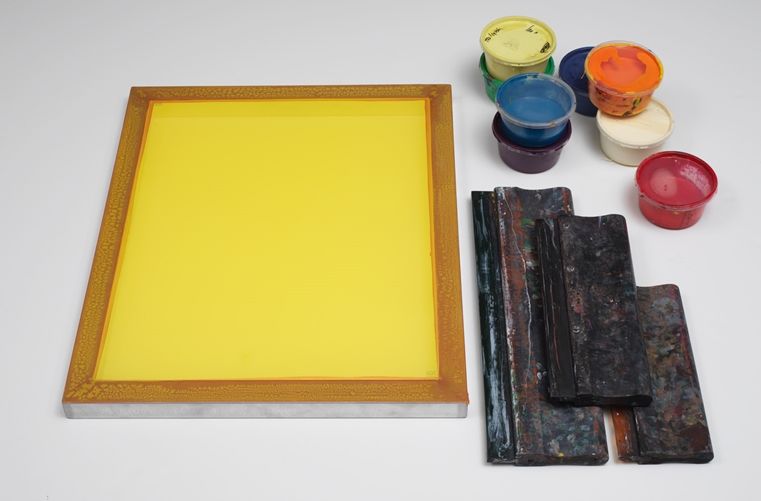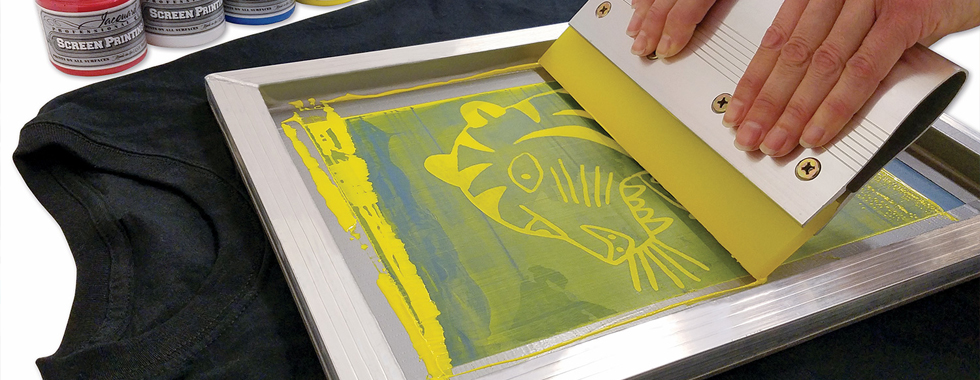ChatGPT said: What customers are saying in 10:9 Design reviews: feedback you should read
The Necessary Overview to Comprehending Screen Printing and Its Versatile Makes use of
Screen printing has a rich history that dates back to old times, advancing into an advanced method made use of across various markets today. This overview discovers the details of the screen printing procedure, describing its applications in style, home, and advertising and marketing style - 10:9 Design Screen Printing. Recognizing these principles can open up creative potential for both creative and industrial projects. The following areas will reveal crucial pointers and techniques to enhance one's screen printing undertakings
The Background of Screen Printing
Although screen printing has roots that map back centuries, its evolution reflects the technological and artistic advancements of numerous cultures. Coming from old China, the method was at first made use of for decorating fabrics and later spread to Japan, where it came to be important to Ukiyo-e woodblock printing. The approach moved to Europe in the 18th century, where it obtained popularity among craftsmens and commercial printers. The creation of image emulsion in the 20th century transformed screen printing, enabling for more elaborate designs and higher efficiency. Musicians like Andy Warhol further thrust its popularity, using the tool to produce iconic works that combined commercialism and art. By the late 20th century, screen printing had established itself as a flexible method, used in vogue, advertising, and art. Today, it remains to develop, incorporating digital modern technology and expanding its applications across numerous industries.
The Screen Printing Refine Explained
Screen printing changes creative visions right into tangible styles via a series of accurate actions. An image is created and then transferred onto a screen, generally made of fine mesh fabric stretched over a framework. A light-sensitive emulsion is put on the screen, which is subjected to light, solidifying in areas not covered by the picture. After washing out the unhardened emulsion, a stencil is formed.
Next off, the screen is positioned over the substratum, whether it be textile, paper, or one more material. Ink is then pushed through the open locations of the pattern making use of a squeegee, transferring the style onto the substrate below. This process can be repeated for numerous shades, calling for separate screens for each hue. Finally, the published thing is healed making use of heat to guarantee the ink sticks correctly, resulting in a long lasting, lively layout on-line.
Kinds Of Screen Printing Techniques

In addition, specialized strategies, such as discharge screen printing, remove dye from the fabric to create softer prints, while foil screen printing applies metallic foil to achieve a shiny finish (10:9 Design near me). Each strategy uses distinctive attributes, dealing with various creative demands and production scales, ultimately expanding the possibilities within the screen printing domain
Applications of Screen Printing in Various Industries

Furthermore, the signage and advertising fields make use of screen printing for producing captivating screens and banners. This technique enables vibrant shades and elaborate designs that record focus. In electronics, screen printing is employed for applying conductive inks to motherboard, crucial for element connections. In addition, the home style market accepts screen printing to create unique designs on fabrics and wall art. Generally, screen printing serves as an essential device across diverse areas, enhancing products with individualized and visually enticing graphics.
Tips for Successful Screen Printing Projects
While undertaking a screen printing job, careful focus to detail can substantially improve the last outcome. Initially, selecting high-grade materials is crucial; this includes the screen, inks, and substrates. Utilizing appropriate mesh counts can influence ink deposition and detail resolution. Preparation is just as crucial; comprehensive cleansing of screens and proper direct exposure times assure crisp prints.
Next, exact registration is vital for multi-color prints. Utilizing placement tools can help attain accurate layering. In addition, testing prints on scrap products before production helps determine prospective concerns without losing sources.

Frequently Asked Concerns
What Products Are Best for Screen Printing on Fabric?
Cotton and polyester blends are suitable for screen printing on fabric because of their durability and ink absorption. Furthermore, specialized fabrics like silk or canvas can create one-of-a-kind textures and coatings, enhancing the general design high quality.
Just how Do I Tidy and Maintain Screen Printing Equipment?
To preserve and clean up screen printing tools, one ought to regularly clean displays with suitable solvents, inspect mops for wear, oil moving parts, and shop all items in a dry, dust-free atmosphere to lengthen their lifespan.
What Are the Ecological Effects of Screen Printing?
Screen printing can have substantial environmental impacts, including chemical waste from inks and solvents, water use throughout cleansing processes, and energy usage. Eco-friendly products and lasting practices are vital for minimizing these negative impacts.
Can Screen Printing Be Done at Home Successfully?
Screen printing can be effectively done at home with the ideal products and techniques. Hobbyists can create top quality prints, though success depends upon their skill degree, devices, and understanding of the process included.
What Are the Expenses Related To Starting a Display Printing Service?

Starting a screen printing business entails prices for equipment, products, and work space. Preliminary costs usually vary from a couple of hundred to a number of thousand dollars, relying on the scale, quality of machinery, and preferred manufacturing capability.
Screen printing has an abundant history that dates back to old times, developing right into a sophisticated strategy used throughout various markets today. An additional method, rotary screen printing, utilizes round screens, promoting constant printing on material rolls, thus enhancing performance for large productions. Furthermore, specialty methods, such as discharge screen printing, eliminate color from the material to create softer prints, while aluminum foil screen printing uses metallic aluminum foil to attain a shiny surface. In the style sector, screen printing is commonly made use of to create lively layouts on apparel, allowing brand names to display their unique styles. Cotton and polyester blends are ideal for screen printing on fabric due to their longevity and ink absorption.